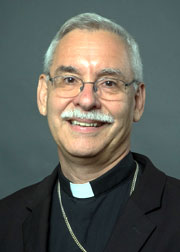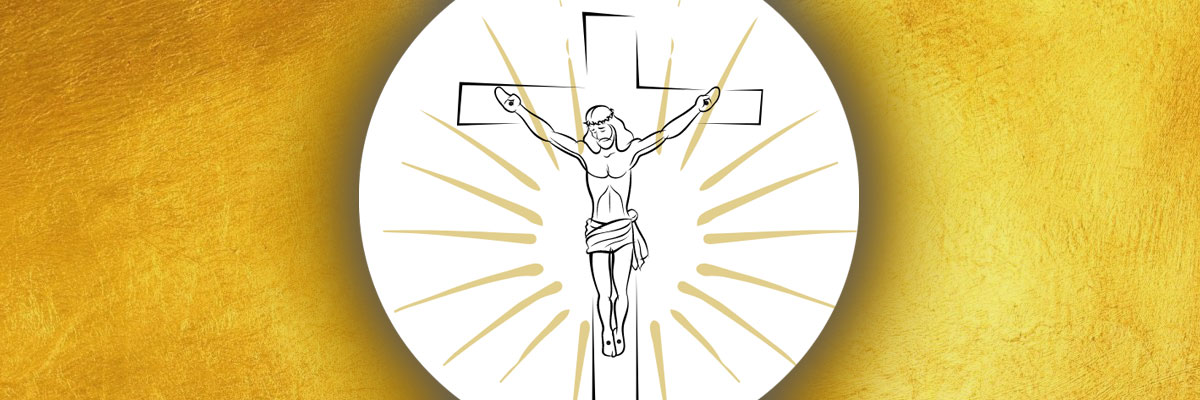Official Website of the
Catholic Diocese of Little Rock
2022 Opening Mass for National Eucharistic Revival
Published: June 18, 2022
Bishop Anthony B. Taylor recorded the following homily in audio/video format to be played at all Masses for the Solemnity of the Most Holy Body and Blood of Christ, June 18-19, in parishes across the Diocese of Little Rock to open the celebration of the National Eucharistic Revival in Arkansas.

Bishop Taylor
Today we begin a three-year national process of eucharistic revival, during which we seek to grow in our understanding and appreciation of the Eucharist, the Body and Blood, Soul and Divinity of Jesus whom we receive and worship in every Mass.
It seems that there are many Catholics who do not understand or believe in Jesus’ real — not merely symbolic — presence in the Eucharist. And since our faith is reinforced more by what we do than by what we say, I would like to launch this eucharistic revival in Arkansas with an invitation for all of us to consider what we can do to better express our faith in the manner of our worship.
The Catechism of the Catholic Church describes “the Eucharist as the ‘source and summit’ of the Christian life.” (catechism, no. 1324-1327) We encounter Jesus in the most intimate way possible, receiving him into our very self. And then, filled with his enduring presence, we are sent forth to be his living presence in the world today.
The Eucharist should draw us into Jesus’ very act of self-giving, such that we increasingly give of ourselves to God and to others in union with Jesus. We offer ourselves in union with Jesus to the Father from the altar during Mass, and having done so, we proceed to offer ourselves in union with Jesus to the Father in loving service.
Everything we do in the Church flows from this encounter with the Lord, and our awareness of his presence should especially be reflected in our manner of dress and in our conduct in the Church proper. So, for instance, what would you wear if you had an audience with the pope? I’ll bet you’d wear your Sunday best.
Well Jesus is greater than the pope, and Jesus is here. For that reason, I would like to begin this eucharistic revival by asking all of us to reflect on how our actions give witness to our faith in Jesus, truly present in the Eucharist we celebrate and receive.
The first step is to consider what we can do to better prepare ourselves internally for what we are to receive. This will include fostering a spirit of reverent silence in the Church before Mass, as well as active participation throughout the Mass. Blessing ourselves with holy water upon entering the sacred space, genuflecting or bowing before entering the pew and then kneeling down to offer a short prayer before taking a seat. These simple gestures give witness to our belief in the real presence of Jesus in the Eucharist.
I invite you to reflect on the manner in which Communion is received — making a throne to receive the Lord if receiving on the hand, one hand on top of the other, or on the tongue — your choice — and if receiving the Precious Blood, to do so very carefully.
Starting today, to the degree that local circumstances permit, parishes are now free to resume offering the Precious Blood to the congregation. Jesus is fully present in the Eucharist when received only in the form of bread, but the sign is more complete when both elements are received.
As for the reception of Communion, each of us needs to make sure that there is nothing in our life that prevents us from receiving the Eucharist: You have to be a Catholic; you need to be in a state of grace, with no unconfessed mortal sins; you must fast at least one hour before Communion; you can’t be in a sexual relationship with someone to whom you are not married in the Church and so on.
If you are in any of these situations, you can receive a blessing at Mass instead of Communion. You come up with your arms folded across your chest, which will signal to the minister to give you a blessing instead of Communion. If you are in this situation, I invite you to speak with your priest, who will help you address whatever issues are keeping you from receiving our Lord in the Eucharist. And in the meantime, he can also help you learn how to make a spiritual communion.
The Eucharist should draw us into Jesus’ very act of self-giving, such that we increasingly give of ourselves to God and to others in union with Jesus. We offer ourselves in union with Jesus to the Father from the altar during Mass, and having done so, we proceed to offer ourselves in union with Jesus to the Father in loving service.
In this way, the vertical and horizontal are inseparably linked in the “breaking of the bread.” Christ invites us to enter into his sacrificial love and then allow ourselves to become “bread that is broken” for others.




